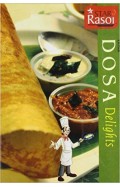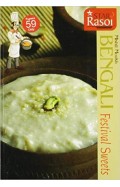Digital Art 1960s–Now
By: Pita Arreola
-
Rs 16,195.50
- Rs 17,995.00
- 10%
You save Rs 1,799.50.
Due to constant currency fluctuation, prices are subject to change with or without notice.
A new history of digital art from the 1960s to the present day, with decade-by-decade essays exploring evolving digital art practices, alongside interviews with artists, gallerists, museum curators and collectors.
This is the global story of digital art from its earliest beginnings to the innovative work of today, encompassing wide-ranging, experimental practices, from computer-generated works on paper created by mathematicians, scientists, engineers, programmers and artists in the 1960s to interactive installations, virtual reality, net art and videogames. A collaborative, dynamic approach still characterizes the practice of today’s digital artists, who employ technology as a tool while examining its social, ethical and political impact.
Digital Art: 1960s–Now delves into ideas of artificial intelligence, computer animation, simulation and cybernetics through the historic works of pioneering artists such as Analívia Cordeiro, Manfred Mohr, Vera Molnar and Frieder Nake, alongside renowned contemporary practitioners including Danielle Brathwaite-Shirley, Ibiye Camp, Sarah Friend, Trevor Paglen and Anna Ridler. Decade-by-decade essays by leading authorities explore changing digital art practices. Interviews and discussions with prominent artists, gallerists, museum curators and collectors at the forefront of the discipline offer further insights in this absorbing illustrated study of the evolution of digital art and its future possibilities.
A new history of digital art from the 1960s to the present day, with decade-by-decade essays exploring evolving digital art practices, alongside interviews with artists, gallerists, museum curators and collectors.
This is the global story of digital art from its earliest beginnings to the innovative work of today, encompassing wide-ranging, experimental practices, from computer-generated works on paper created by mathematicians, scientists, engineers, programmers and artists in the 1960s to interactive installations, virtual reality, net art and videogames. A collaborative, dynamic approach still characterizes the practice of today’s digital artists, who employ technology as a tool while examining its social, ethical and political impact.
Digital Art: 1960s–Now delves into ideas of artificial intelligence, computer animation, simulation and cybernetics through the historic works of pioneering artists such as Analívia Cordeiro, Manfred Mohr, Vera Molnar and Frieder Nake, alongside renowned contemporary practitioners including Danielle Brathwaite-Shirley, Ibiye Camp, Sarah Friend, Trevor Paglen and Anna Ridler. Decade-by-decade essays by leading authorities explore changing digital art practices. Interviews and discussions with prominent artists, gallerists, museum curators and collectors at the forefront of the discipline offer further insights in this absorbing illustrated study of the evolution of digital art and its future possibilities.
Zubin Mehta: A Musical Journey (An Authorized Biography)
By: VOID - Bakhtiar K. Dadabhoy
Rs 892.50 Rs 1,050.00 Ex Tax :Rs 892.50
The Origins of Political Order From Prehuman Times to the French RevolutioN
By: Francis Fukuyama
Rs 4,045.50 Rs 4,495.00 Ex Tax :Rs 4,045.50
Manning Up: How the Rise of Women Has Turned Men into Boys
By: Kay Hymowitz
Rs 845.75 Rs 995.00 Ex Tax :Rs 845.75
The Obama Syndrome: Surrender At Home War Abroad
By: Tariq Ali
Rs 1,100.75 Rs 1,295.00 Ex Tax :Rs 1,100.75
The Quest For Meaning: Developing A Philosophy Of Pluralism
By: Tariq Ramadan
Rs 1,185.75 Rs 1,395.00 Ex Tax :Rs 1,185.75
No similar books from this author available at the moment.
Good News For A Change: Hope For A Troubled Planet
By: David Suzuki
Rs 505.75 Rs 595.00 Ex Tax :Rs 505.75
The Idle Stance of the Tippler Pigeon
By: Safinah Danish Elahi
Rs 1,705.50 Rs 1,895.00 Ex Tax :Rs 1,705.50
Zubin Mehta: A Musical Journey (An Authorized Biography)
By: VOID - Bakhtiar K. Dadabhoy
Rs 892.50 Rs 1,050.00 Ex Tax :Rs 892.50














-120x187.jpg?q6)





-120x187.jpg?q6)










